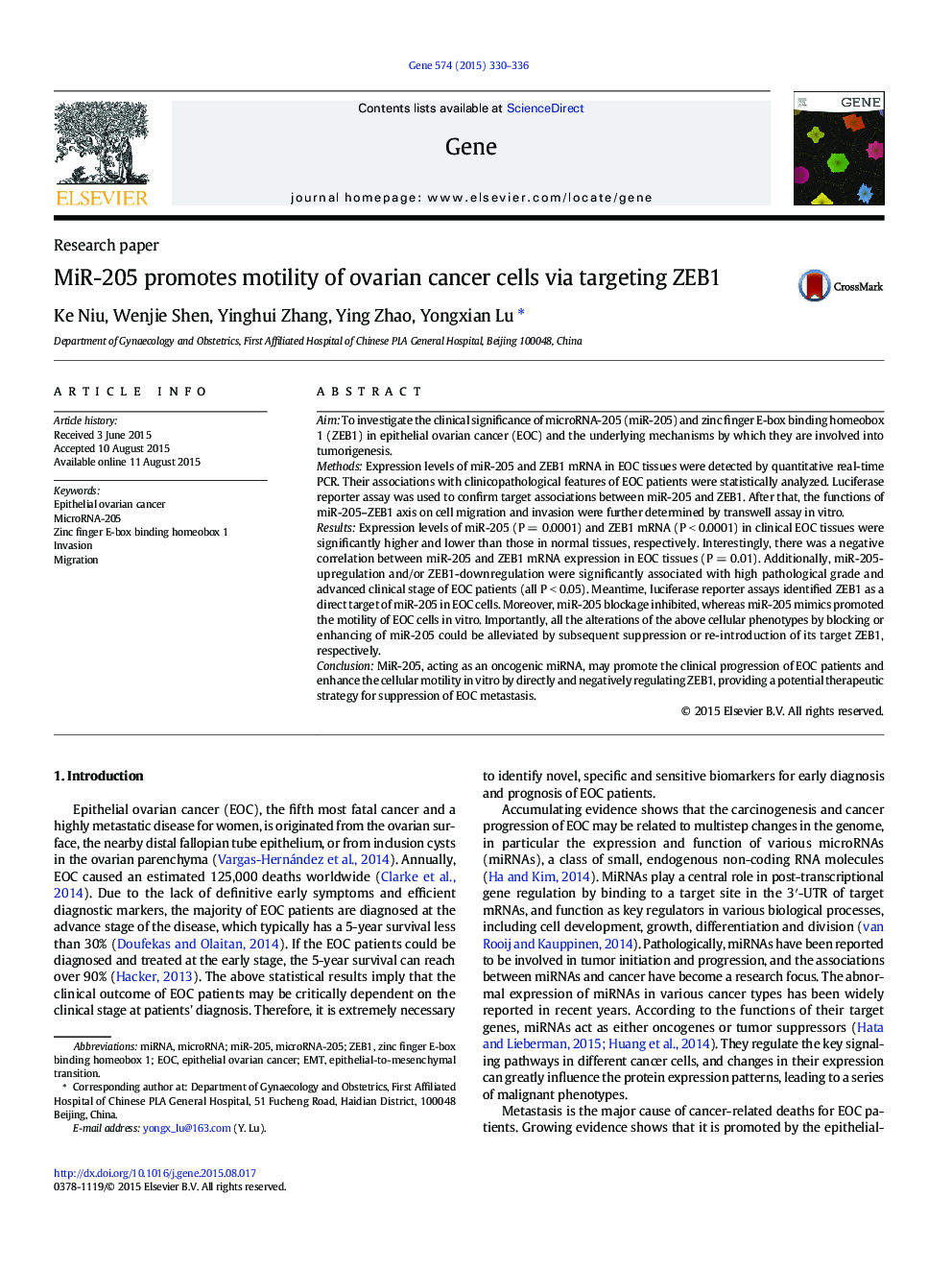| Article ID | Journal | Published Year | Pages | File Type |
|---|---|---|---|---|
| 2815362 | Gene | 2015 | 7 Pages |
•There was a negative correlation between miR-205 and ZEB1 expression in EOC tissues.•MiR-205–ZEB1 dysregulation was associated with advanced progression of EOC patients.•MiR-205 enhanced cellular motility by directly and negatively regulating ZEB1.
AimTo investigate the clinical significance of microRNA-205 (miR-205) and zinc finger E-box binding homeobox 1 (ZEB1) in epithelial ovarian cancer (EOC) and the underlying mechanisms by which they are involved into tumorigenesis.MethodsExpression levels of miR-205 and ZEB1 mRNA in EOC tissues were detected by quantitative real-time PCR. Their associations with clinicopathological features of EOC patients were statistically analyzed. Luciferase reporter assay was used to confirm target associations between miR-205 and ZEB1. After that, the functions of miR-205–ZEB1 axis on cell migration and invasion were further determined by transwell assay in vitro.ResultsExpression levels of miR-205 (P = 0.0001) and ZEB1 mRNA (P < 0.0001) in clinical EOC tissues were significantly higher and lower than those in normal tissues, respectively. Interestingly, there was a negative correlation between miR-205 and ZEB1 mRNA expression in EOC tissues (P = 0.01). Additionally, miR-205-upregulation and/or ZEB1-downregulation were significantly associated with high pathological grade and advanced clinical stage of EOC patients (all P < 0.05). Meantime, luciferase reporter assays identified ZEB1 as a direct target of miR-205 in EOC cells. Moreover, miR-205 blockage inhibited, whereas miR-205 mimics promoted the motility of EOC cells in vitro. Importantly, all the alterations of the above cellular phenotypes by blocking or enhancing of miR-205 could be alleviated by subsequent suppression or re-introduction of its target ZEB1, respectively.ConclusionMiR-205, acting as an oncogenic miRNA, may promote the clinical progression of EOC patients and enhance the cellular motility in vitro by directly and negatively regulating ZEB1, providing a potential therapeutic strategy for suppression of EOC metastasis.
